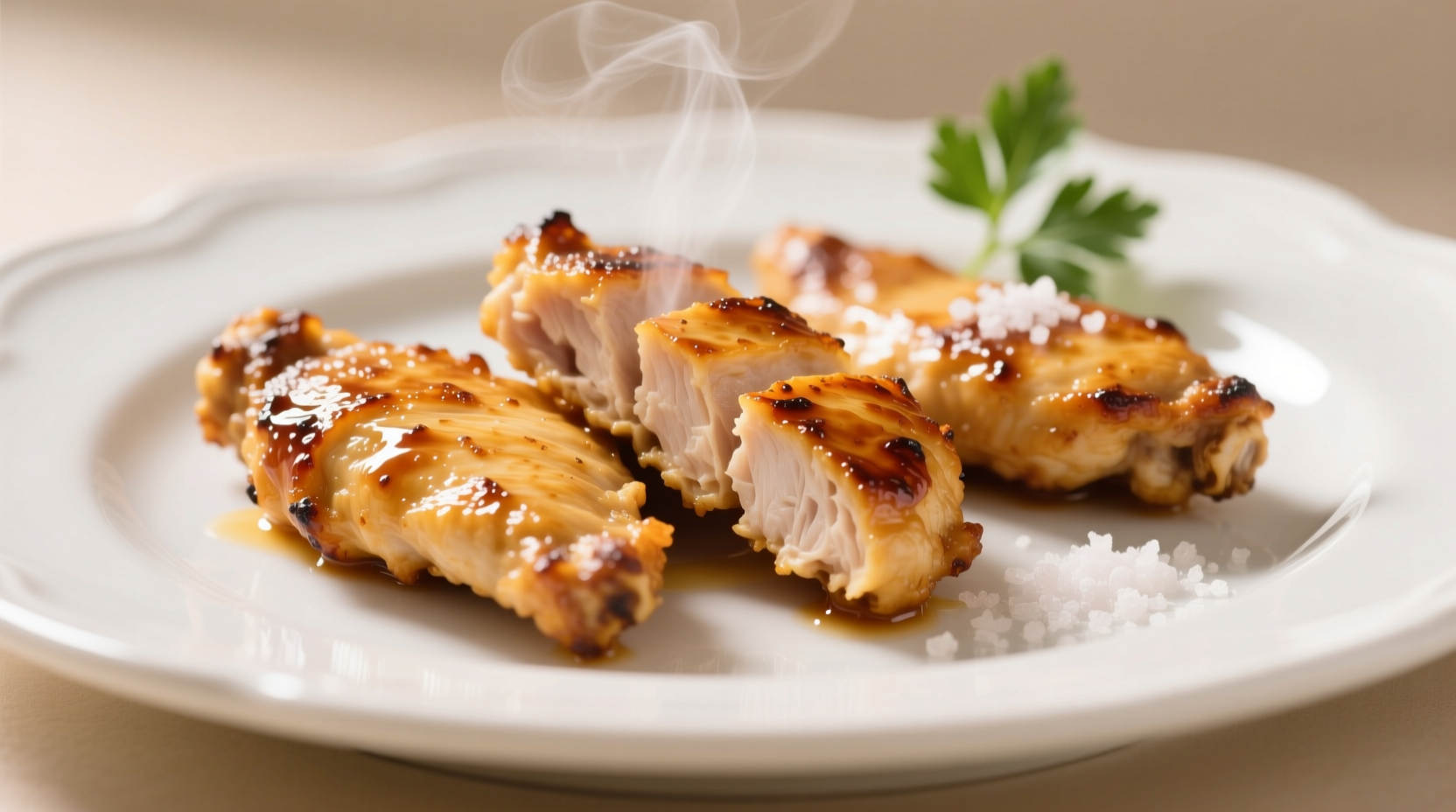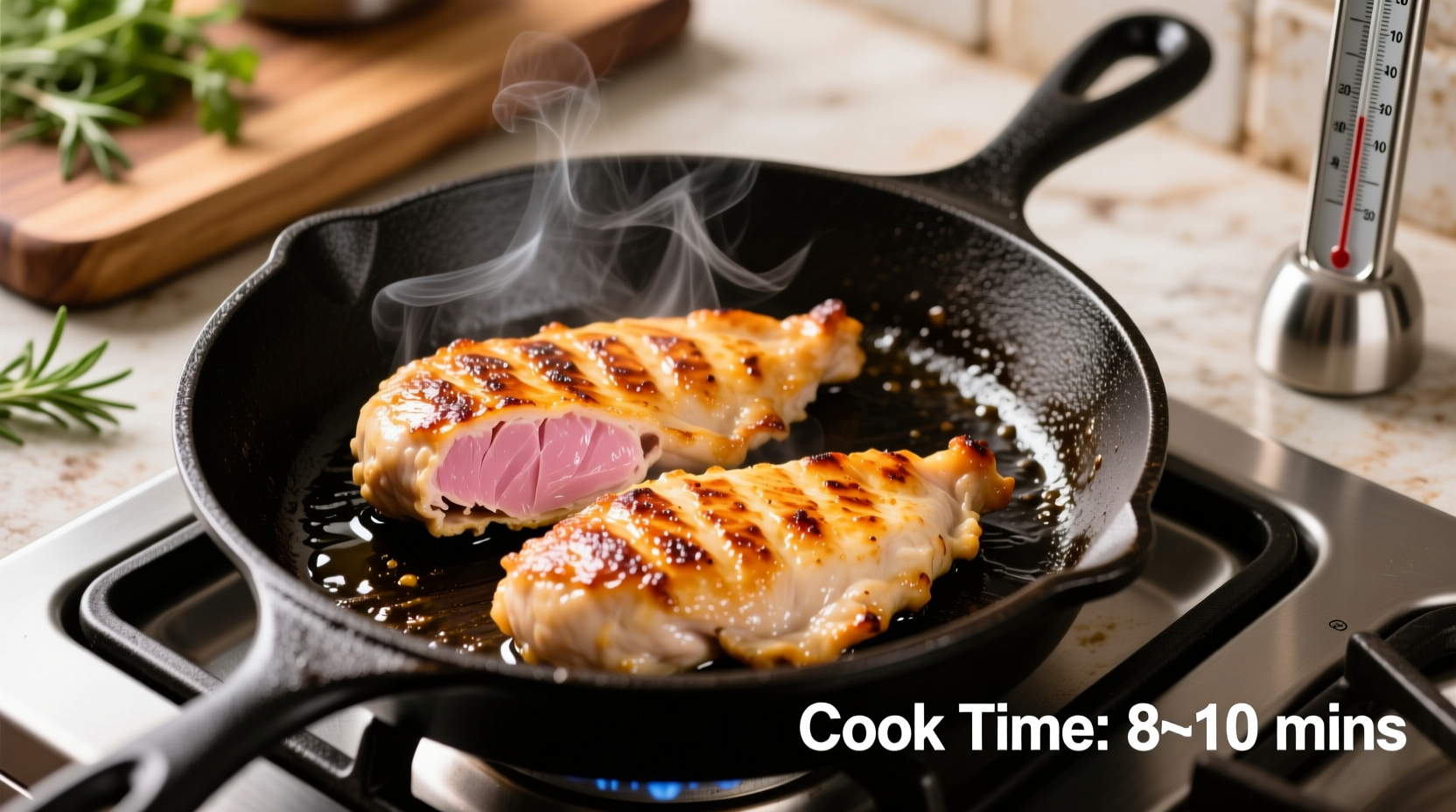Getting chicken tenderloins just right requires understanding their unique properties. These small, delicate cuts from under the chicken breast cook faster than other parts but easily become dry if overcooked. This guide delivers exact timing for every cooking method, verified by food safety standards and professional kitchen experience.
Why Chicken Tenderloins Cook Differently
Chicken tenderloins (also called tenderloins or strips) are small, thin muscles that lack significant fat content. Their low fat-to-meat ratio means they cook quickly but can dry out in seconds. Unlike thicker chicken breasts, tenderloins require precise timing to achieve juicy results while meeting food safety requirements.
Key Factors Affecting Cooking Time
Several variables influence how long your chicken tenderloins need:
- Thickness - Most tenderloins range from 1/4 to 1/2 inch thick
- Starting temperature - Room temperature cooks 25% faster than refrigerated
- Cooking surface - Cast iron retains heat better than stainless steel
- Crowding - Overcrowded pans lower temperature and create steam
Exact Cooking Times by Method
| Cooking Method | Temperature | Time Per Side | Total Time | Internal Temp |
|---|---|---|---|---|
| Pan-frying | 375°F (190°C) | 3-4 minutes | 6-8 minutes | 165°F (74°C) |
| Baking | 400°F (204°C) | N/A | 12-15 minutes | 165°F (74°C) |
| Grilling | Medium-high heat | 2-3 minutes | 4-6 minutes | 165°F (74°C) |
| Air frying | 380°F (193°C) | 4 minutes | 8 minutes | 165°F (74°C) |
How to Verify Perfect Doneness
Timing provides a guideline, but internal temperature is the only reliable indicator. The USDA Food Safety and Inspection Service confirms that all poultry must reach 165°F (74°C) to eliminate harmful bacteria. Use an instant-read thermometer inserted into the thickest part:
- 160-162°F - Remove from heat (carryover cooking will reach 165°F)
- 165°F - Perfectly safe and juicy
- 170°F+ - Beginning to dry out
Visual cues include firm texture with slight spring-back and no pink coloration. However, these methods are less reliable than temperature measurement, especially with seasoned or marinated chicken.

Avoiding Common Mistakes
Professional kitchens see these errors repeatedly:
- Not patting dry - Moisture creates steam instead of sear (always dry thoroughly)
- Overcrowding the pan - Causes uneven cooking (leave 1-inch space between pieces)
- Flipping too early - Wait until edges turn opaque before turning
- Skipping resting time - 5 minutes resting allows juices to redistribute
Food Safety Timeline for Chicken Tenderloins
Understanding this critical timeline prevents foodborne illness:
- 0-2 hours - Safe at room temperature (below 90°F/32°C)
- 2-4 hours - Danger zone begins (bacteria multiply rapidly)
- 4+ hours - Unsafe to consume (per FDA Food Code)
- Cooking process - Must reach 165°F within 15 minutes of starting
Rescuing Overcooked Chicken
If your tenderloins turn out dry, try these professional fixes:
- Slice thinly against the grain
- Soak in warm broth for 5 minutes
- Cover with sauce or gravy
- Chop for salads or wraps where moisture comes from other ingredients
Pro Tips for Perfect Results Every Time
Implement these chef-recommended techniques:
- Brine for 30 minutes in 1/4 cup salt + 4 cups water for extra moisture
- Bring to room temperature for 15 minutes before cooking
- Use oil with high smoke point like avocado or grapeseed
- Preheat cooking surface until a drop of water sizzles immediately
When Timing Varies: Special Considerations
Certain conditions require adjusted timing:
- Marinated chicken - Cook 30-60 seconds less (acid tenderizes meat)
- Breaded tenders - Add 1-2 minutes per side for crisp coating
- Thick-cut pieces - May need 1-2 extra minutes per side
- High altitude - Add 5-10% more cooking time above 3,000 feet











 浙公网安备
33010002000092号
浙公网安备
33010002000092号 浙B2-20120091-4
浙B2-20120091-4